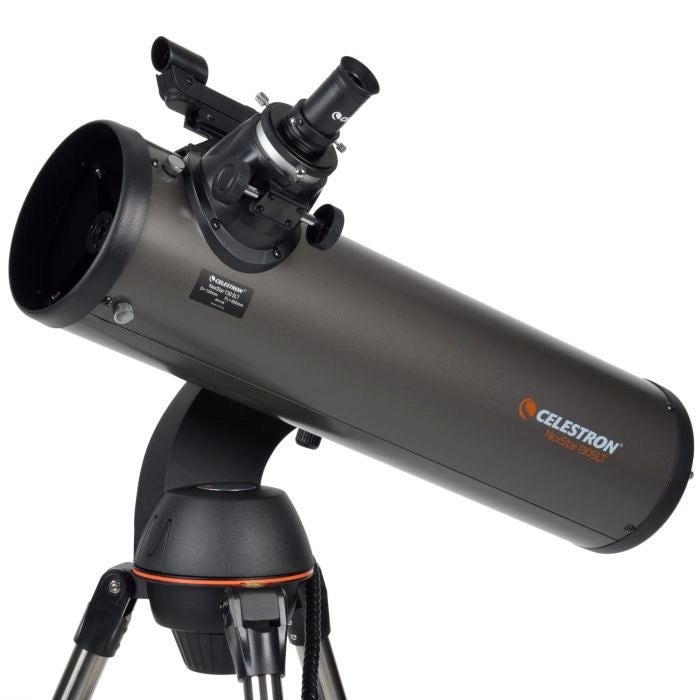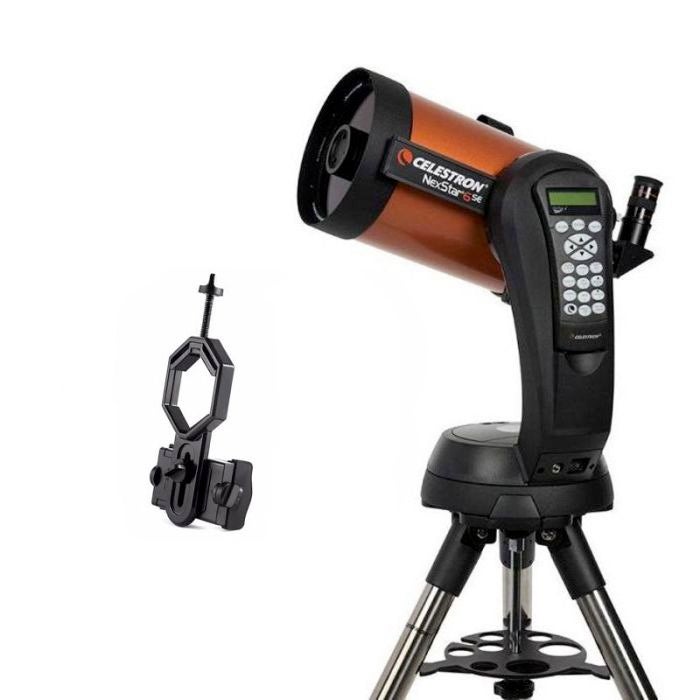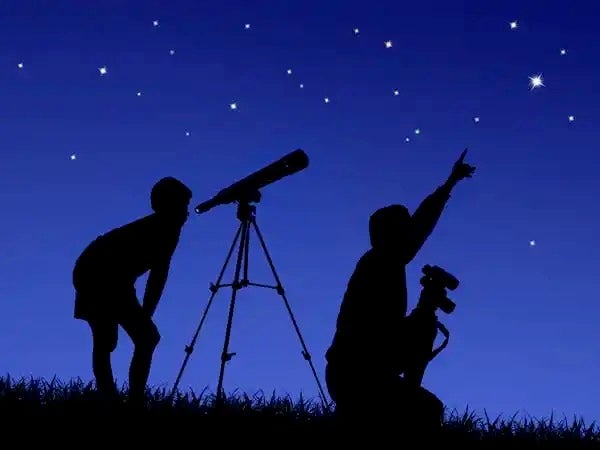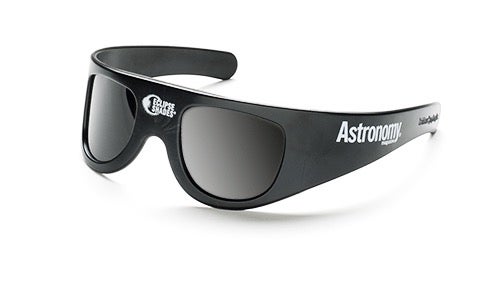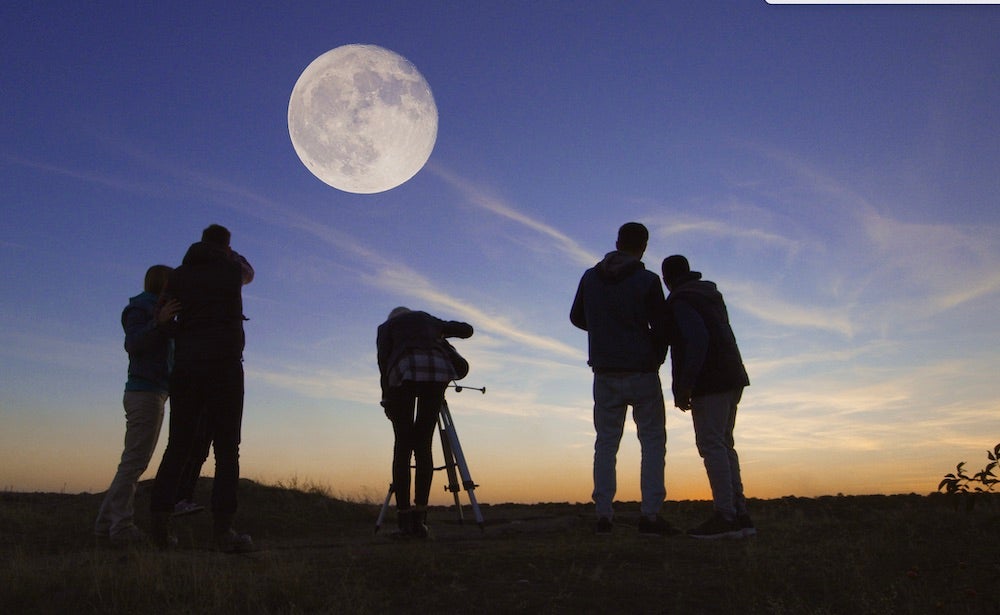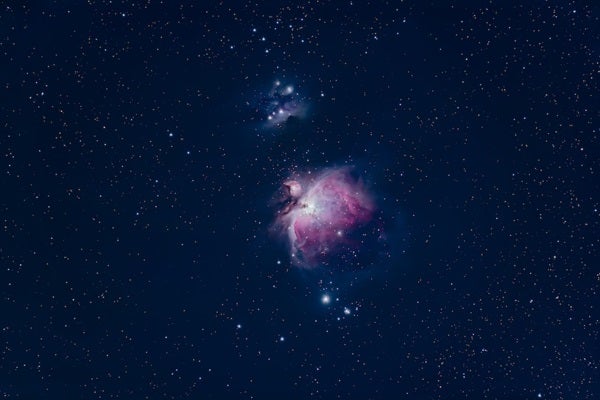
Note: This post contains affiliate links. When you buy a product through the links on this page, we may earn a commission.
Are you ready to explore the distant galaxies, nebulae, and star clusters that speckle the cosmos, all from the comfort of your home? Look no further. In this guide, we’ll dive into some of the best telescopes available for viewing deep-space objects.
When making the leap into deep-space observing, choosing the right telescope is key. Here are a few of the most important factors to consider:
- Aperture size: The aperture is the telescope’s window to the universe. A larger aperture gathers more light, enabling you to see fainter and more distant objects. It’s particularly important for observing objects in deep space, as many galaxies and nebulae are dim.
- Focal length: These determine the telescope’s power and field of view. A longer focal length yields a higher magnification and narrower field of view, which is ideal for detailed views of distant deep-space objects.
- Telescope type: Reflectors are popular choices for viewing deep thanks to their large apertures and affordability, often offering more bang for your buck. But refractors and compound telescopes also offer advantages, such as increased image sharpness and versatility. No matter what you choose, be sure your telescope will unlock the specific deep-space sights you wish to view.
- Mount type: A stable and precise mount is essential for long exposure astrophotography and smooth tracking of distant celestial bodies. Equatorial mounts are typically preferred by astrophotographers for their ability to mimic the Earth’s rotation, making long-term exposures more manageable. However, altazimuth mounts are also viable options for observing deep-space objects.
- Ease of use and portability: Consider how user-friendly and portable the telescope is. Some telescopes have computerized systems for easy tracking, which can be greatly beneficial for beginners. Portability is also vitally important if you plan to frequently travel to dark-sky locations to unlock deep-sky objects.
Related: The best telescopes for beginners | The best splurge-worthy telescopes
Selecting the right telescope for viewing objects in deep space requires balancing technical specifications and personal preferences. But understanding the key factors above will guide you to a telescope that not only fits your observational needs, but also enhances your stargazing journey.
How we selected these telescopes
Our team of experts at Astronomy magazine has decades of hands-on experience with a wide range of telescopes, and we stay up-to-date with the latest technological trends and advancements. For this list, we’ve considered user reviews, technical specifications for each telescope, brand reputation, user-friendliness, and our own experiences viewing deep-space objects with a host of different telescopes.
Here is our list of the best telescopes for deep space viewing.
Celestron NexStar 127SLT Computerized Telescope
See it at Amazon | See it at High Point Scientific
- Features and benefits: This telescope offers a Maksutov-Cassegrain design with a 5-inch aperture and a 1500mm focal length, which is great for deep-sky observations. Its computerized mount and extensive database of over 4,000 celestial objects also makes navigating through the night sky effortless.
- Why we like it: The NexStar 127SLT is an ideal blend of portability and power, offering clear views of nebulae, galaxies, and star clusters. Its automated tracking system makes it a great choice for both beginners and intermediate stargazers alike.
- What to keep in mind: Though lightweight, the NexStar 127SLT provides a robust viewing experience, making it suitable for those who enjoy both convenience and deep-space exploration.
- Product details:
- Type: Maksutov-Cassegrain
- Mount: Computerized Altazimuth
- Aperture: 5 inches (127 mm)
- Focal length: 59 inches (1500 mm)
- Price: $699.95
Sky-Watcher Flextube 300Pi SynScan GoTo Collapsible Dobsonian with WiFi Control
See it at Amazon | See it at High Point Scientific
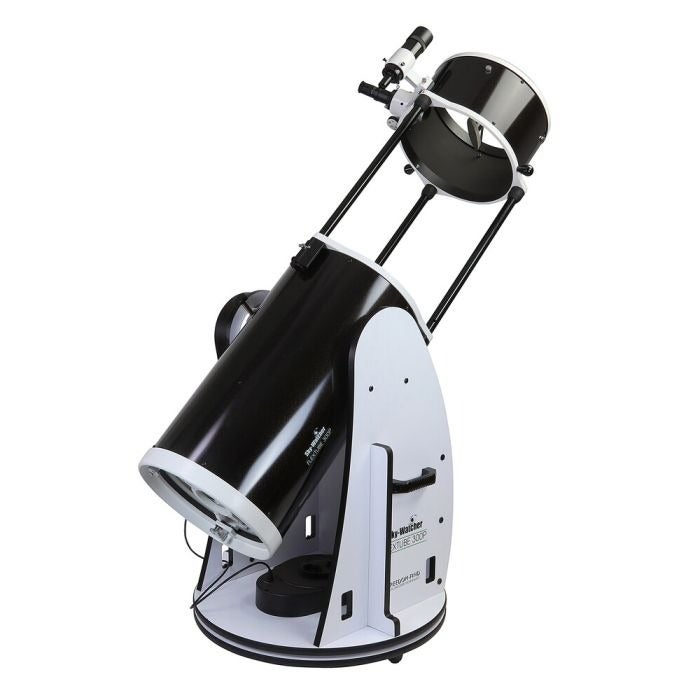
- Features and benefits: With a large 12-inch aperture and 1200mm focal length, this Dobsonian telescope is designed for capturing bright, detailed images of distant celestial objects. Its collapsible design also enhances its portability.
- Why we like it: The large aperture is ideal for deep-space viewing, bringing galaxies, nebulae, and star clusters into clear focus. Its unique design is perfect for serious astronomers who value both performance and convenience.
- What to keep in mind: The size of this telescope might be challenging for complete beginners, but it’s an excellent choice for those ready to take their stargazing to the next level.
- Product details:
- Type: Dobsonian
- Mount: Altazimuth
- Aperture: 12 inches (305 mm)
- Focal length: 47 inches (1200 mm)
- Price: $2,405.00
Orion StarBlast 4.5-inch Astro Reflector Telescope
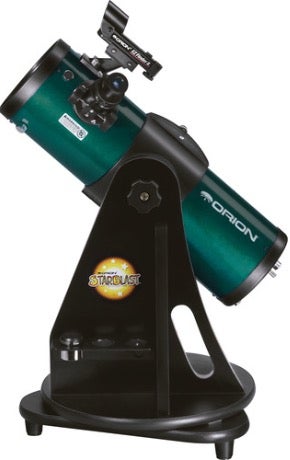
- Features and benefits: This compact telescope, with a respectable 4.5-inch aperture and a 450mm focal length, is well-suited for beginners and intermediate users. Its manual altazimuth mount and smooth controls facilitate easy tracking of celestial objects.
- Why we like it: The StarBlast 4.5 offers bright and clear views of deep-space objects like star clusters and nebulae, despite its smaller size. It’s a great entry-level telescope that doesn’t compromise on the quality of deep-space observations.
- What to keep in mind: Its simplicity and portability make it ideal for casual stargazers and those new to astronomy.
- Product details:
- Type: Reflector
- Mount: Tabletop Altazimuth
- Aperture: 4.5 inches (114 mm)
- Focal length: 17.7 inches (450 mm)
- Price: $249.99
Celestron Nexstar 8SE Computerized Telescope
See it at Amazon | See it at High Point Scientific
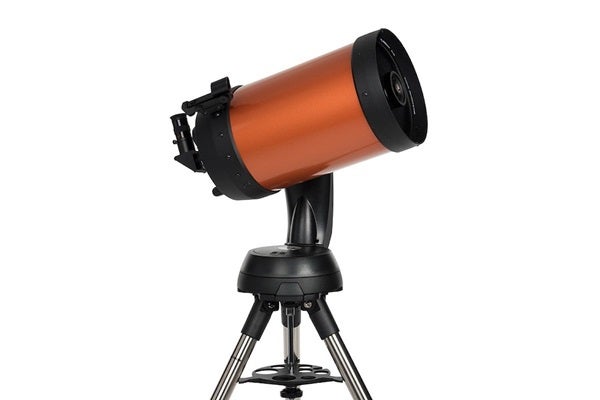
- Features and benefits: This computerized GoTo telescope features an 8-inch aperture and 2032mm focal length. It’s capable of automatically locating and tracking celestial objects, making deep-space observations easily accessible.
- Why we like it: The 8SE is ideal for those who want a balance of sophisticated technology and ease of use, all without sacrificing optical quality. Its built-in features make it perfect for target faint deep-space objects.
- What to keep in mind: It’s a more advanced model, suitable for enthusiasts willing to invest in a high-quality deep-space observation experience.
- Product details:
- Type: Schmidt-Cassegrain
- Mount: Motorized GoTo
- Aperture: 8 inches (203.2 mm)
- Focal length: 80 inches (2032 mm)
- Price: $1,589.95
Orion SpaceProbe 130ST Equatorial Reflector Telescope
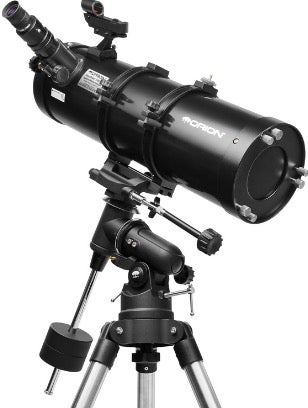
- Features and benefits: The Orion SpaceProbe 130ST is a reflector telescope with a 5.1-inch aperture and 650mm focal length. It includes an EQ-2 mount for stable tracking and comes with two 1.25” Plossl eyepieces (10mm and 25mm), enhancing its capability for deep-space observations.
- Why we like it: This telescope is ideal for serious beginners or intermediate stargazers, providing excellent stability for clear views of deep-sky objects like galaxies and star clusters, all at an affordable price.
- What to keep in mind: Its manual mount requires some skill to track celestial objects, making it better suited for those with some experience or a willingness to learn.
- Product details:
- Type: Reflector
- Mount: Equatorial
- Aperture: 5.1 inches (130 mm)
- Focal length: 25.6 inches (650 mm)
- Price: $279.99
Zhumell Z130 Portable Newtonian Reflector
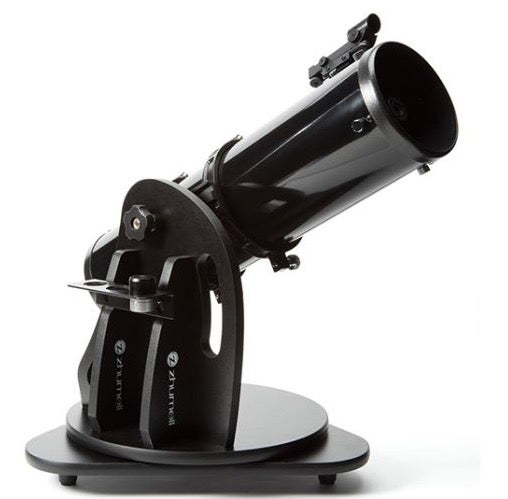
- Features and benefits: The Zhumell Z130 boasts a 5.1-inch objective lens and fully coated optics, providing clear and bright views. Its portable design and equatorial mount make it easy to track objects across the night sky, ideal for observing deep-space phenomena.
- Why we like it: This telescope’s combination of portability and powerful optics makes it a great choice for beginners and enthusiasts alike. The ease of setup and use, coupled with its ability to deliver detailed views of nebulae and galaxies, makes it one of our top picks.
- What to keep in mind: While it’s well-suited for deep-space observation, it lacks some of the automated features found in more expensive models. Thus, it might require a bit more effort when locating and tracking objects.
- Product details:
- Type: Reflector
- Mount: Altazimuth
- Aperture: 5.1 inches (130 mm)
- Focal length: 25.6 inches (650 mm)
- Price: $399.95
Meade 10” LX90 Advanced Coma-Free Computerized Telescope
- Features and benefits: The Meade LX90 ACF 10″ offers an advanced coma-free optical design with a 10-inch aperture and 2500mm focal length. Its AutoStar computer controller comes preloaded with over 30,000 celestial objects, simplifying the process of locating and tracking deep-space wonders.
- Why we like it: This telescope combines a large aperture with advanced optics, unlocking exceptionally clear and detailed views of distant galaxies, nebulae, and star clusters. The AutoStar system is a standout feature, offering an expansive database and easy-to-use tracking technology.
- • What to keep in mind: The LX90-ACF is a more advanced and has a heavier setup that might be better suited for serious amateur astronomers who have a dedicated space for observation and a desire for high-quality deep-space imaging.
- Product details:
o Type: Advanced Coma-Free (ACF)
o Mount: Fork Mount with AutoStar
o Aperture: 10 inches (254 mm)
o Focal length: 98.4 inches (2500 mm)
o Price: $3,049.99
Vixen R200SS Reflector Telescope
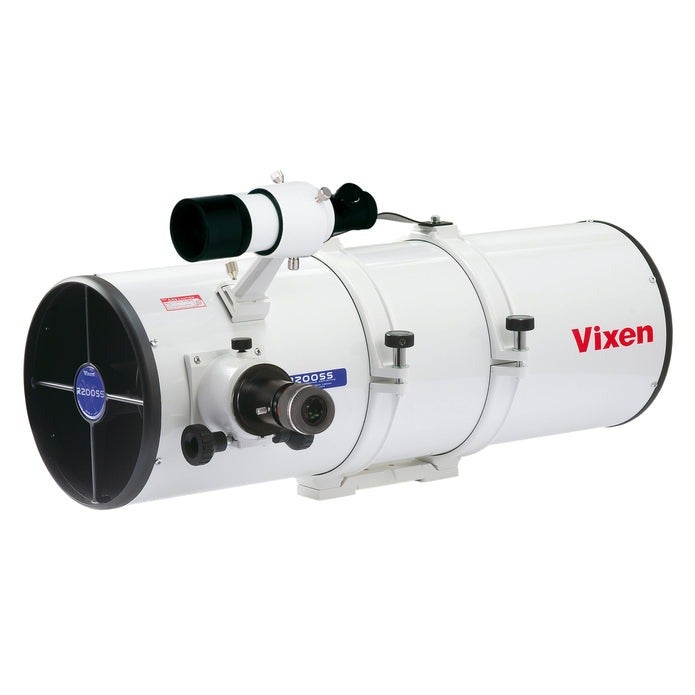
- Features and benefits: The Vixen R200SS features an 8-inch mirror and a relatively short 800mm focal length, delivering wide-field views that are ideal for capturing large deep-space objects.
- Why we like it: Its fast f/4 optics are great for astrophotography, providing sharp, wide-field views of the Milky Way, nebulae, and galaxies
- What to keep in mind: Its fast optics may require frequent collimation, and its open tube design might demand regular maintenance, making it more suitable for intermediate to advanced users.
- Product details:
o Type: Newtonian Reflector
o Mount: Not included
o Aperture: 8 inches (200 mm)
o Focal length: 31.5 inches (800 mm)
o Price: $1,999.99
How to care for and maintain your telescope
Maintaining your telescope is crucial for ensuring its longevity and performance when viewing deep-space objects. Below are some of the key things to keep in mind.
- Regular cleaning: Use a soft brush or canned air to gently remove dust from lenses and mirrors. For smudges, use a proper lens cleaning solution and microfiber cloth. Wipe the telescope’s body with a dry cloth to keep it dust-free.
- Proper storage: Store your telescope in a dry, cool place to prevent moisture buildup. Also use dust covers to protect optical elements when not in use.
- Collimation: Regularly check and adjust the alignment of your telescope’s optics, especially if it’s a reflector model.
- Avoid condensation: Allow your telescope to acclimate to outdoor temperatures before use. And use dew shields or heaters to prevent condensation on lenses.
- Handling and transport: Always move and transport your telescope with care, avoiding rough handling. Be sure to also secure it in a padded case or bag when possible.
- Regular inspections: Periodically inspect all mechanical parts like the mount, tripod, and focusers, to ensure they are tight and functioning as intended.
- Avoid direct sunlight: Never point your telescope at the Sun without proper solar filters to prevent serious damage to both the telescope’s optics and your eyes.
- Software updates: If you choose a computerized telescope, be sure to keep the software up to date to ensure smooth operation and access to the latest features.
By following the simple steps above, you can keep your telescope in peak condition for years to come, ensuring each stargazing session is as awe-inspiring as your first. Simply put, a well-maintained telescope not only performs better, it also better holds up against time.
Whether you’re a novice stargazer or an experienced astronomer, choosing the right telescope can transform your view of the night sky, bringing distant galaxies and nebulae within reach. Remember, the key to successfully observing objects in deep space lies in finding the telescope that aligns with your skills, interests, and budget.
Happy stargazing!

